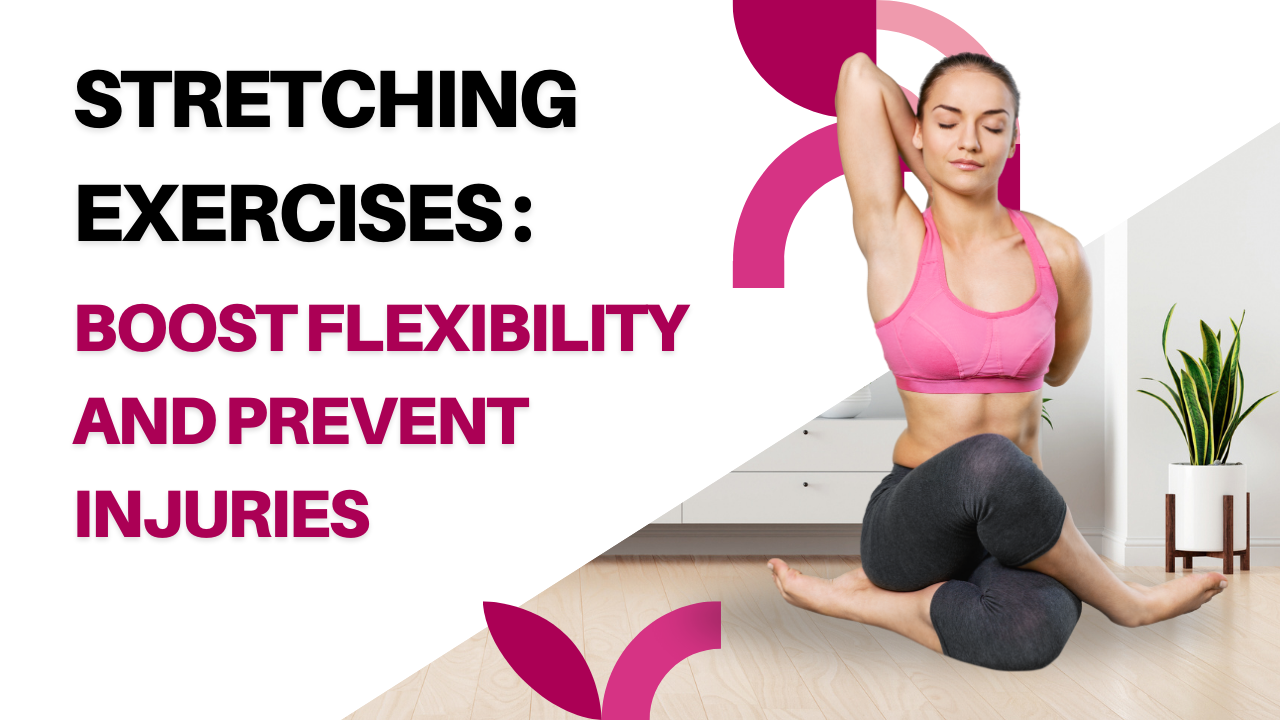Stretching exercises are often overlooked in fitness routines, but they play a crucial role in overall health and wellness. While many focus on strength training, cardio, and weight loss, flexibility and mobility are just as important. Incorporating stretching exercises into your daily routine can improve posture, enhance muscle flexibility, and increase joint mobility.
The health benefits of stretching exercises are numerous. They help reduce muscle soreness after workouts, prevent injury, and increase blood flow to muscles. Regular stretching can also relieve stress, promote relaxation, and improve mental clarity, contributing to better overall well-being. Stretching exercises can help keep the body agile, which is essential for daily activities and physical performance.
Adding stretching exercises to your fitness routine is a simple yet effective way to maintain balance and flexibility. They can improve your range of motion, making movement smoother and more efficient. Whether you’re an athlete or someone looking to improve everyday mobility, stretching exercises are a valuable addition to any workout plan.
What is Stretching ?
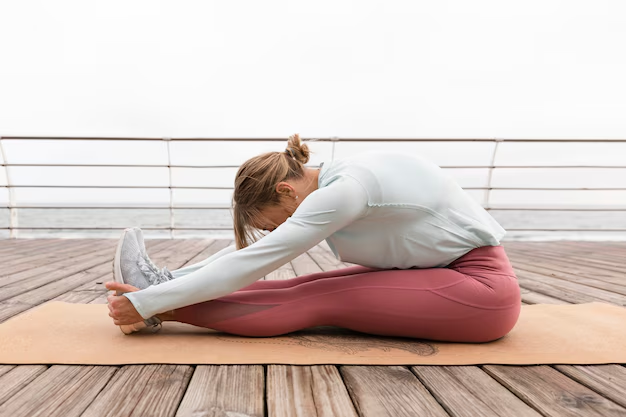
Stretching exercises involve gently lengthening muscles and tendons to improve flexibility and range of motion. These exercises help enhance mobility, reduce muscle tension, and prevent injury. Regular stretching exercises can increase joint flexibility, improve posture, and contribute to overall physical wellness. Including stretching exercises in your routine is essential for maintaining healthy, flexible muscles and joints. There are two main types of stretching exercises:
Static Stretching: This involves holding a stretch for 15 to 60 seconds without movement. It helps increase flexibility and range of motion. Examples include hamstring and shoulder stretches, typically done after exercise to relax muscles.
Dynamic Stretching: This includes controlled movements that take muscles and joints through their full range of motion. It’s often used in warm-ups to increase blood flow and prepare muscles for activity, like leg swings or arm circles.
Stretching Exercises helps improve the elasticity of muscles and ligaments, allowing for greater flexibility and reducing the risk of injury. But its benefits go beyond just flexibility.
Health Benefits of Stretching Exercises: Why You Should Make it a Priority
Including regular stretching Exercises into your daily routine provides various benefits for both physical and mental health. Stretching helps improve flexibility, increase blood flow, reduce muscle tension, and prevent injuries. It also promotes relaxation, reduces stress, and boosts mental clarity. Making stretching a habit can greatly enhance overall well-being and contribute to a healthier, more balanced lifestyle.
- Enhanced Flexibility and Mobility
A key benefit of stretching is improved flexibility. Regular stretching makes muscles more supple and joints more mobile, which enhances your ability to perform everyday activities such as bending, reaching, and lifting. This increased flexibility helps reduce the risk of injury and improves overall movement.
Improved Posture: Regular stretching helps align the spine and prevent imbalances that lead to poor posture. This is especially beneficial for those who sit for long periods, as tight hip flexors and back muscles can cause slouching.
Joint Health: Stretching helps lubricate the joints, reducing stiffness and enhancing their overall function. This can improve flexibility and mobility, promoting better movement.
- Injury Prevention
Flexibility plays a crucial role in preventing injuries. Stretching helps prepare muscles and tendons for the demands of physical activity by increasing their flexibility and range of motion. This reduces the risk of strain or injury, allowing the body to move more freely and safely during exercise or daily tasks.
Muscle Elasticity: Regular stretching helps maintain the natural elasticity of your muscles, making them more flexible and less prone to injuries like strains and sprains. By keeping muscles long and supple, stretching reduces the tension that can lead to muscle tears or discomfort during physical activity.
Warm-up Before Exercise: Stretching before exercise primes your muscles, preparing them for more intense or strenuous movements. This helps increase blood flow, reduce muscle stiffness, and decrease the risk of overstraining, ensuring your muscles are ready to perform at their best without unnecessary stress or injury.
- Reduced Muscle Tension and Soreness

Muscle tension can build up from long periods of inactivity, stress, or intense physical activity. Stretching helps relieve this tightness by easing muscle tension, promoting relaxation, and improving overall comfort. Regular stretching can prevent muscles from becoming stiff and reduce the discomfort caused by accumulated stress or exertion.
Decreased Muscle Soreness: Stretching after a workout can help reduce the intensity of delayed-onset muscle soreness (DOMS). It promotes better blood flow to the muscles, aiding in the removal of metabolic waste and helping the muscles recover faster, leading to less soreness and stiffness post-exercise.
- Increased Blood Flow and Circulation
Stretching improves circulation, boosting the flow of oxygen and nutrients to muscles and tissues. This enhanced blood flow helps accelerate recovery by promoting faster healing, reducing muscle stiffness, and supporting overall muscle repair. Regular stretching aids in maintaining healthy circulation, improving recovery time after physical activity.
Lymphatic Flow: Stretching enhances lymphatic circulation, aiding the body in more effectively removing toxins and waste products. This improved flow supports the body’s natural detoxification process, promoting better overall health and helping to maintain a clean, efficient system.
- Stress Relief and Improved Mental Health
Stretching benefits both the body and mind by releasing built-up stress and tension. This practice promotes mental well-being, creating a sense of calm and relaxation. Regular stretching helps reduce anxiety, improve mood, and foster a peaceful state of mind, contributing to overall emotional and mental health.
Mind-Body Connection: Gentle stretching can stimulate the release of endorphins, the brain’s natural “feel-good” chemicals. This helps improve mood, reduce anxiety, and promote a sense of well-being, fostering a stronger mind-body connection and supporting mental health.
Including Stretching Exercises into Your Routine: Tips for Success
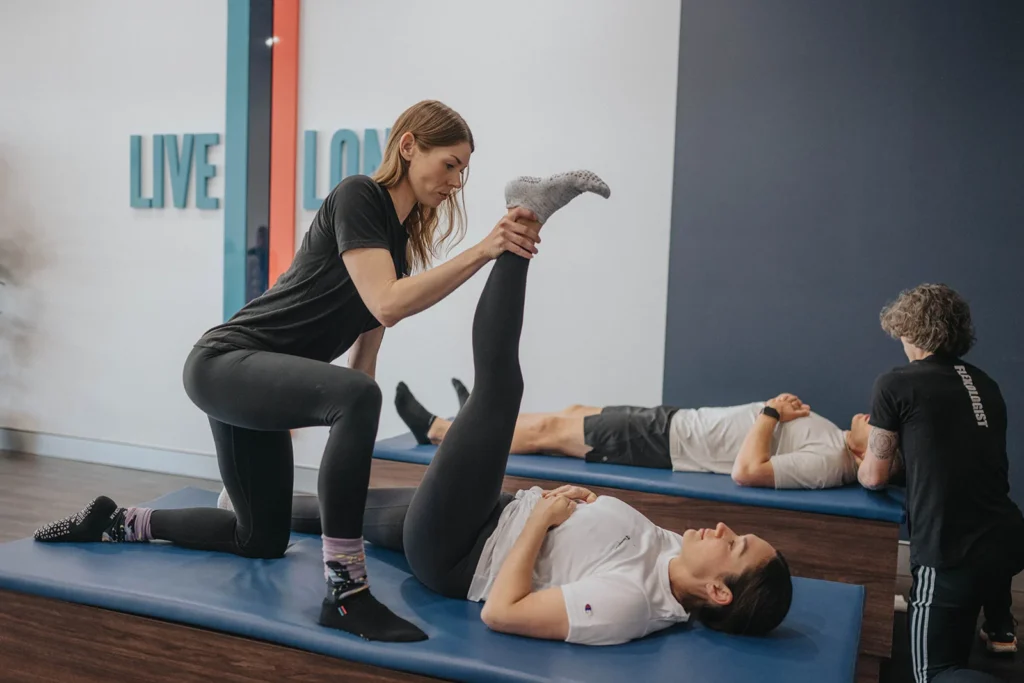
To reap the full benefits of stretching Exercises, consistency and proper technique are key. Here are some practical tips to help you effectively incorporate stretching into your daily routine:
- Start Slow and Progress Gradually
If you’re new to stretching, it’s important to begin with gentle, basic stretches. Start at a comfortable level and gradually increase the intensity as your flexibility improves over time. Avoid pushing your body too hard, as overstretching can cause muscle strains and injuries. Take your time to allow your muscles to adapt.
- Warm Up Before Stretching
Stretching cold muscles can increase the risk of injury, so always warm up before stretching. Engaging in light physical activity, such as a brisk walk, a few minutes on a stationary bike, or light cardio, helps increase blood flow to your muscles and prepares them for stretching. A proper warm-up ensures your muscles are more flexible and less prone to injury.
- Focus on All Major Muscle Groups
To maintain a balanced routine, make sure you stretch all major muscle groups, not just specific areas. Aim to stretch your arms, legs, back, and core to ensure your body remains flexible and strong in all areas. This approach helps improve overall flexibility and reduces muscle imbalances that could lead to injury.
- Hold Each Stretch for 15-30 Seconds
For effective results, hold each stretch for at least 15 to 30 seconds. This duration allows the muscle to lengthen properly and helps improve flexibility. Avoid bouncing or jerking movements during stretches, as they can cause muscle strain. The stretch should feel challenging, but not painful—focus on controlled, steady movements.
- Consistency is Key
To achieve optimal results, it’s important to stretch consistently. Aim to incorporate stretching into your routine at least 3 to 4 times per week. Whether you stretch in the morning to start your day or in the evening to wind down, making it a regular habit will help you maintain flexibility and improve overall mobility.
Best Flexibility Exercises for a Healthier Body
The following are some of the best stretching exercises to improve flexibility and mobility. These exercises can be done anywhere and don’t require any special equipment.
- Hamstring Stretch
The hamstrings often tighten from prolonged sitting or lack of movement. This simple stretch helps release tension in the back of your legs.
How to do it: Stand tall with one foot placed slightly in front of the other. Keep your back straight as you bend forward at the hips, reaching for your toes. Avoid rounding your back, and focus on hinging from your hips. Hold the stretch for 15-30 seconds, feeling the stretch along the back of your thigh, then switch sides.
- Cat-Cow Stretch (Spinal Flexion and Extension)
This dynamic stretch improves spinal flexibility and helps alleviate tension in the back. It’s great for warming up the spine before more strenuous activity.
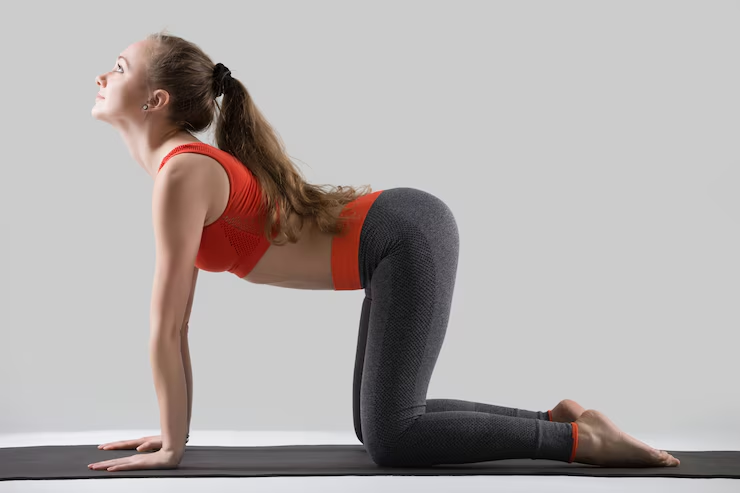
How to do it: Start on all fours with your wrists under your shoulders and knees under your hips. Inhale deeply and arch your back, lifting your chest and tailbone (cow position). As you exhale, round your back and tuck your chin to your chest (cat position). Repeat for 10-15 repetitions, flowing smoothly between the two movements.
- Hip Flexor Stretch
Hip flexors can become tight due to extended sitting, leading to lower back discomfort. This stretch helps open the hips and ease tension in the lower body.
How to do it: Step one foot forward into a lunge position, keeping your back knee on the ground. Gently push your hips forward while maintaining a straight back. You should feel a stretch in the front of your hip and thigh. Hold for 15-30 seconds, then switch sides. This stretch is particularly beneficial for those who spend a lot of time sitting.
- Chest Opener Stretch
This stretch is ideal for alleviating tightness in the chest and shoulders, which is common due to slouching or poor posture.
How to do it: Stand tall with your feet shoulder-width apart. Interlace your fingers behind your back and gently lift your arms while opening your chest. Focus on squeezing your shoulder blades together as you stretch your chest forward. Hold the position for 15-30 seconds and breathe deeply. This stretch helps improve posture and relieves tension in the upper body.
- Quadriceps Stretch
The quadriceps, located in the front of your thighs, can become tight from activities like running, cycling, or squatting. This stretch helps lengthen the muscles and improve flexibility.
How to do it: Stand tall and grab one ankle behind you, bringing your heel toward your glutes. Keep your knees close together and push your hips gently forward to deepen the stretch. Make sure to stand upright and not lean forward. Hold for 15-30 seconds, then switch sides. This stretch is particularly helpful after lower body workouts.
Stretching Routine for All Levels
For beginners, here’s a simple stretching routine to help you get started:
| Stretch Name | Duration | Muscle Group Targeted |
|---|---|---|
| Hamstring Stretch | 15-30 seconds/side | Hamstrings |
| Hip Flexor Stretch | 15-30 seconds/side | Hip Flexors |
| Chest Opener Stretch | 15-30 seconds | Chest and Shoulders |
| Quadriceps Stretch | 15-30 seconds/side | Quadriceps |
| Cat-Cow Stretch | 10-15 reps | Spine and Back |
| Child’s Pose | 30 seconds | Lower Back and Hips |
Repeat this routine 2-3 times per week to improve flexibility and prevent stiffness.
Overcoming Common Stretching Mistakes
Even though stretching is a simple and effective practice, many people unknowingly make mistakes that can limit their progress or even lead to injury. Here are some common mistakes to avoid:
Bouncing During a Stretch: Jerking movements or bouncing while stretching, often referred to as ballistic stretching, should be avoided. These rapid movements can strain muscles and increase the risk of injury. Instead, focus on slow, controlled stretches that allow your muscles to gently lengthen.
Stretching Cold Muscles: Stretching cold muscles is a common mistake that can lead to injury. Cold muscles are less pliable and more prone to strains. Always perform a light warm-up, such as brisk walking or light cardio, to increase blood flow to your muscles before starting any stretches.
Holding Your Breath: It’s essential to remember to breathe deeply and steadily while stretching. Holding your breath can increase muscle tension, making it harder to relax and stretch effectively. Breathe in slowly through your nose and exhale through your mouth to help your muscles loosen and improve flexibility.
Pushing Too Hard: Stretching should never be painful. If you feel sharp or intense pain, you’re overstretching and risk injury. Stretching should feel like a mild pull or slight discomfort, but it should never cause pain. Always listen to your body and ease off the stretch if it becomes painful.
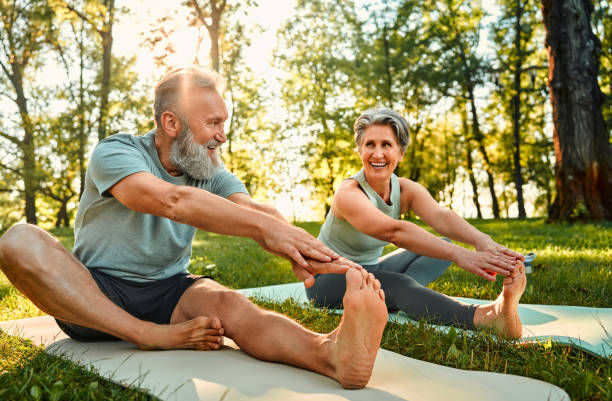
Conclusion
Including stretching into your daily routine is a simple yet powerful way to boost flexibility, prevent injuries, and improve overall health. Whether you’re an athlete, someone who works at a desk, or just looking to enhance your mobility, stretching offers numerous benefits for both your body and mind.
Regular stretching can help alleviate muscle tightness, improve posture, and increase your range of motion. It’s an easy way to keep your body feeling loose and agile, especially if you spend long periods sitting or engaging in physical activities. Stretching can also help reduce stress and increase blood flow, leading to better overall well-being.
By committing to a consistent stretching routine, you’ll experience improved flexibility, greater energy levels, and a deeper sense of relaxation. You’ll also feel more confident in your body’s ability to move freely and perform everyday tasks with ease. Start incorporating stretching into your routine today and enjoy the lasting benefits.
FAQs
- How often should I stretch for the best results ?
For optimal flexibility and health benefits, it is recommended to stretch at least 3-4 times a week. However, if you have specific flexibility goals or want to improve range of motion, stretching every day can be beneficial. Just be sure to listen to your body and avoid overstretching, which could lead to injury. - Is it better to stretch before or after exercise ?
Both pre- and post-exercise stretching have their benefits. Dynamic stretching (e.g., leg swings, arm circles) is best before a workout as it warms up your muscles and prepares your body for activity. Static stretching (e.g., holding a hamstring stretch) is best done after a workout to help relax muscles, improve flexibility, and reduce post-exercise soreness. - Can stretching help with muscle soreness ?
Yes, stretching can help alleviate muscle soreness, especially Delayed Onset Muscle Soreness (DOMS), which typically occurs after intense workouts. Stretching helps improve blood circulation, flushes out metabolic waste, and promotes muscle recovery. Post-workout stretching can reduce stiffness and discomfort in your muscles. - What should I do if I feel pain while stretching ?
If you feel pain during a stretch, stop immediately. Stretching should never cause sharp pain—only a mild, gentle pull. If you’re experiencing pain, it may indicate that you’re overstretching or pushing beyond your body’s limits. Adjust the stretch to a more comfortable position and try to focus on breathing deeply. If pain persists, consult a healthcare provider or physical therapist. - Can stretching improve posture ?
Yes, regular stretching can significantly improve posture by lengthening tight muscles and improving the alignment of the spine. Stretching exercises targeting the chest, hip flexors, and lower back can help relieve tension caused by sitting for long periods, leading to better posture and reduced back and neck discomfort.

